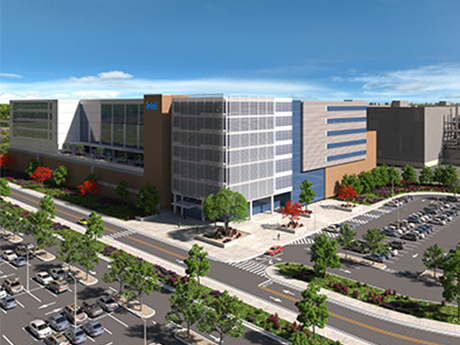By MaCauley Studdard
In the last two-plus years, rent growth and net absorption have both reached new heights, fueled by record levels of demand as a result of surging e-commerce sales. While e-commerce sales growth and the ongoing operational trend of maintaining higher inventory volumes has provided a tailwind to industrial fundamentals, there is also a third critically important component of demand growth that could continue to have an outsized influence on the industrial market in the months and years ahead: onshoring supply chain operations.
Understanding the broader dynamics behind the onshoring trend is important to accurately measure its influence on the industrial market.
Slowing trade growth
The rapid pace of growth in global trade has been one of the most significant economic trends of the last half century: the defining characteristic of modern economies. The percentage of the world’s economy attributed to international trade nearly doubled between 1973 and 2008, growing from approximately 30 percent to 59 percent. While international trade remains the single most influential factor in the global economy, that figure has remained somewhat static in the last 15 years. Several factors have contributed to slowing global trade growth, including:
• Growing demand for skilled labor
• Geopolitical uncertainty and instability
• Supply chain disruptions
• Unpredictable fuel pricing
More recently, higher wages have also played a significant role. For example, Chinese manufacturing wages have nearly doubled in the last decade and with the cost of diesel fuel near historic highs, any globalization momentum has been further stunted. As the financial calculus behind two of the most important catalysts for overseas production — relatively inexpensive labor costs and efficient and cost-effective cargo shipping — has changed, global trade growth has slowed accordingly and the advantages for manufacturers have become less compelling.
COVID consequences
The ripple effect of pandemic pressures led to a wide range of production and transportation disruptions across the globe. From shipping bottlenecks and trade restrictions to political and regulatory complications, global supply chains were under unprecedented duress.
Consequently, many industrial decision-makers took a hard look at their global supply chains, revisiting previous analyses about the cost-benefit equation associated with overseas production. For growing numbers of manufacturers, it became clear that the cost savings associated with a global supply chain no longer justified the elevated risks and uncertainty introduced by supply chain disruptions.
Manufacturing incentives
The continuing instability in the global supply chain, uncertain economic conditions and ongoing geopolitical tensions have prompted seven out of 10 manufacturers in a recent survey to say that they expect to continue reshoring or near-shoring manufacturing operations going forward.
But negative incentives are not the only factors driving that trend. Government initiatives like the CHIPS and Science Act of 2022 and the Inflation Reduction Act provide new incentives for manufacturers to produce more goods domestically. The CHIPS Act provides $39 billion in U.S. manufacturing incentives and $13.2 billion in R&D and workforce development, and the Inflation Reduction Act provides a $7,500 electric vehicle tax credit for vehicles using U.S.-made batteries.
Bringing it home
The list of companies engaging in significant onshoring or reshoring is extensive. For example, Intel is building a $20 billion semiconductor chip plant in Columbus, Ohio. Walmart announced plans to spend $350 billion on domestically produced goods in the next 10 years.
Even companies based overseas are investing in U.S. manufacturing. Hyundai is building a $5.5 billion electric vehicle battery facility in Savannah, Georgia. Taiwan Semiconductor Manufacturing Co. recently announced a $40 billion investment in a plant located in Phoenix, and SK Innovation has announced a new $2.9 billion plant and 1,500-acre campus outside of Memphis, Tennessee. There are dozens of significant manufacturing projects currently underway in the U.S., representing a cumulative investment of more than $100 billion.
Many companies are currently in the early stages of reshoring and onshoring supply chain operations, and we anticipate this trend to continue for years to come.
While pandemics and other black swan events are difficult to predict, geopolitical uncertainty represents the rule rather than the exception. With potentially destabilizing conflicts and economic uncertainty expected to continue to be a factor going forward, it would not be surprising if U.S. companies accelerate their investment in domestic supply chains and reshoring and onshoring momentum continues to pick up steam, which should continue to fuel industrial demand. n
MaCauley Studdard is a managing director with St. Louis-based ElmTree Funds. This article originally appeared in the September issue of Heartland Real Estate Business.


